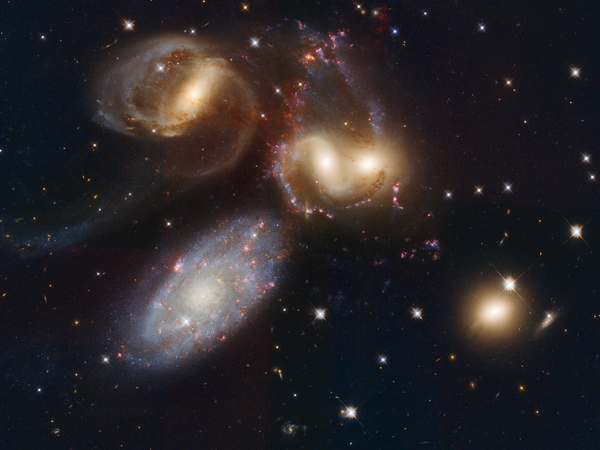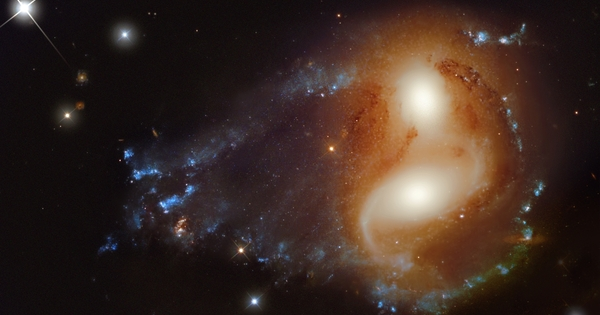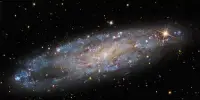NGC 7318 is a pair of colliding galaxies located approximately 280 million light-years away from Earth. It is the name of a galaxy group in the constellation Pegasus. They are members of Stephan’s Quintet and can be found in the constellation Pegasus. Stephan’s Quintet or Hickson Compact Group 92 (HCG 92) are two other names for the group. The brightest member of the group is designated NGC 7318.
Stephan’s Quintet is an intriguing and well-known astronomical object because of its unusual appearance. It was discovered in 1877 by Édouard Stephan and consists of four galaxies interacting with one another, with a fifth galaxy appearing in the foreground but not physically associated with the others. The interacting galaxies in Stephan’s Quintet are tightly bound together by mutual gravitational forces, resulting in a variety of phenomena such as tidal interactions, galaxy mergers, and star formation.

Spitzer Space Telescope discovered a large intergalactic shock wave, as evidenced by an arc produced by NGC 7318b colliding with the group at ≥ 900 km/sec. As NGC 7318b collides with NGC 7318a, the shock wave heats hydrogen atoms in the cluster’s gas, producing a green glow. One of the most turbulent forms of molecular hydrogen is visible in the collision. An international team of scientists from the Max Planck Institute for Nuclear Physics (MPIK) in Heidelberg discovered this phenomenon. This collision can help provide a view into what happened in the early universe, around 10 billion years ago.
NGC 7318 is one of the interacting galaxies in Stephan’s Quintet. It is an unusual galaxy with distorted features caused by gravitational interactions with the other members of the group. These interactions cause intense star formation, resulting in regions of active star birth within NGC 7318. The galaxy has tidal tails, gas bridges, and other structures that are typical of galaxy interactions.
Stephan’s Quintet is thought to be about 280 million light-years away from Earth. It’s a fascinating laboratory for studying the effects of galaxy interactions and their role in triggering star formation processes.
















